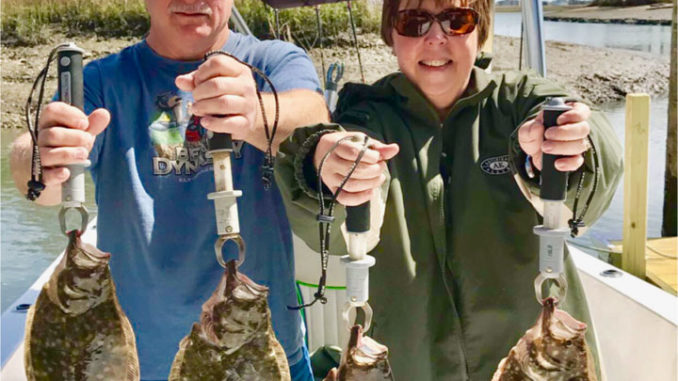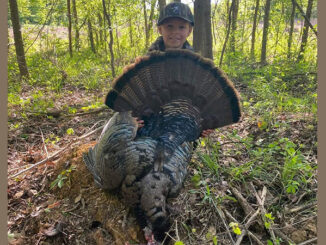
Dropping water temperatures kick off great fall fishing season for flatfish
Flounder are a staple up and down the Atlantic coast, and many areas along the coast of the Carolinas produce plenty of flounder, but South Carolina’s Murrells Inlet isn’t just any place for an ordinary haul. It’s known for seafood and spectacular flounder fishing, and in September, when summer’s doldrums end, the fishery returns to its awesome stature.
Murrells Inlet anglers can catch flounder just about year-round, with the late spring, early summer and fall the best times.
Adam Goodwin of Flygirl Fishing Charters puts his charters on plenty of flounder during the summer, but he loves fall, when the water temperatures begin to drop and fish become more available and more willing to play inshore. They move out of the estuaries during the summer when the water is at its hottest and dissolved oxygen levels decline.
“When the water temperature drops in September, flounder become plentiful inshore,” said Goodwin (843-457-0778), “and they become more active again in the creeks.
“Last year, at the end of the summer, the oxygen was so low we struggled to catch any flounder inside, but they were very plentiful along the beach and at the nearshore reefs where the oxygen levels were high.”
Fortunately, the temperature change this month fixes the oxygen problem inshore and creates a hot flounder bite. Goodwin concentrates on current rips formed around creek mouths in Murrells Inlet’s estuary on both falling and rising tides.
“Flounder will lie along the rips near these creek mouths and wait for bait to pass by. We like to cast just above these rips and make retrieves across the rips where we expect the flounder to be,” he said.
Goodwin is particular about the baits he leaves the dock with every day, preferring to use the bait that’s most prevalent.
“We predominately use finger mullet this time of year, because that’s what is running. I can tell a big difference with finger mullet over mud minnows. The mullet will catch them three-to-one over mud minnows when mullet are available,” he said.
Goodwin typically threads a finger mullet on a half-ounce jighead, casts and makes a very slow but steady retrieve that he calls “sit trolling.” Flounder already expect bait to be moving with the current, and having it slowly creep past can be a real winner. If the current is unusually heavy, he’ll go to a Carolina rig with a ½- to 1-ounce egg sinker and single hook.




Be the first to comment